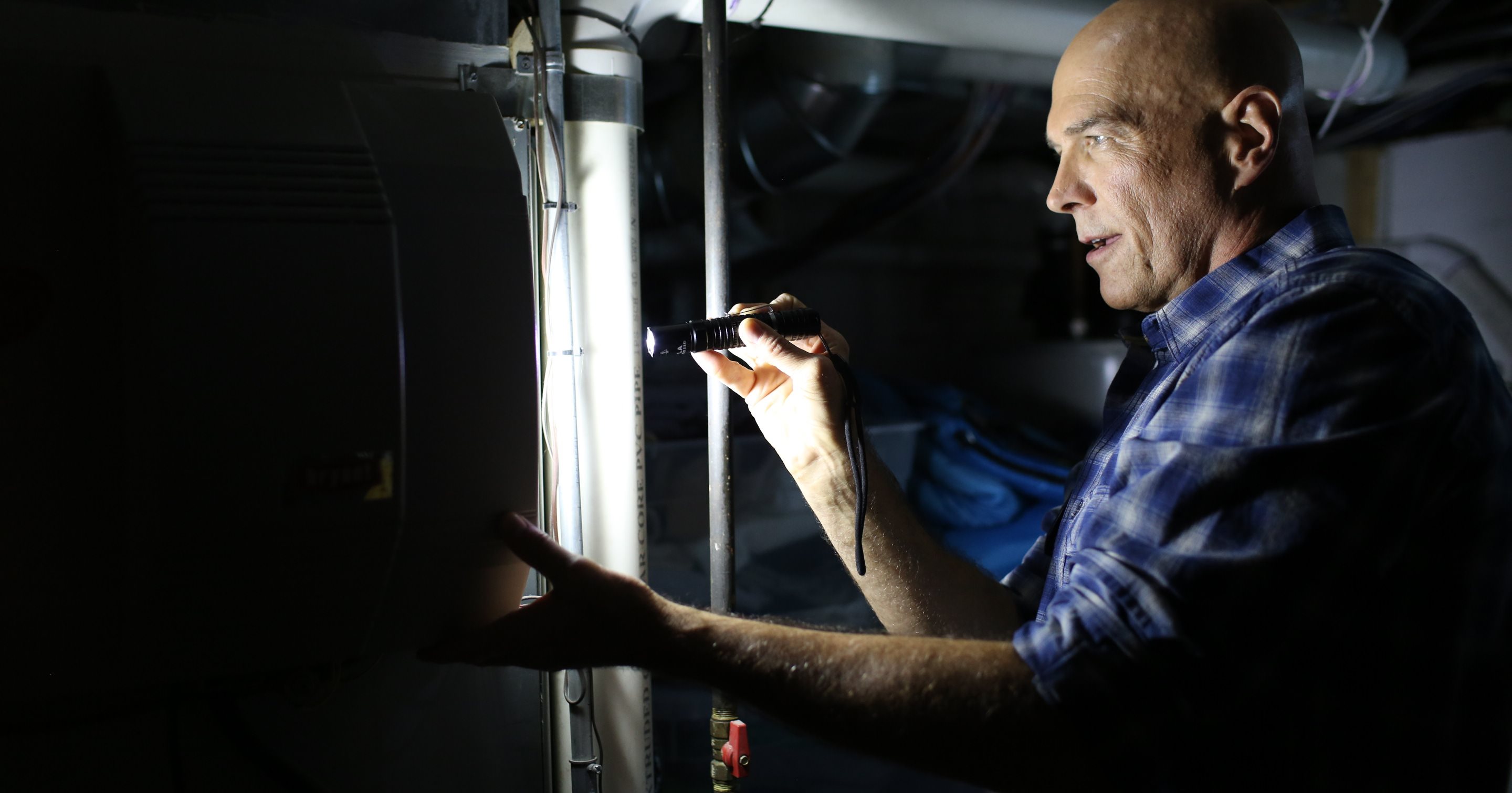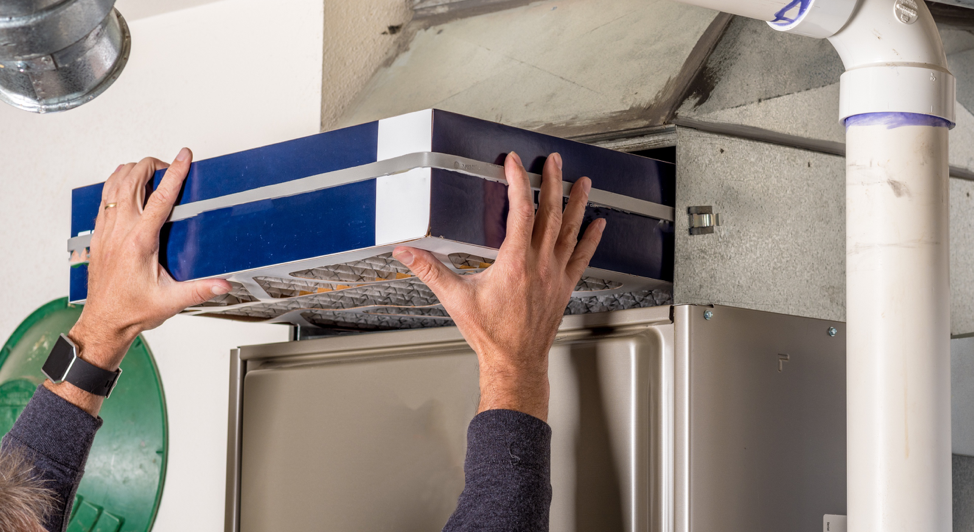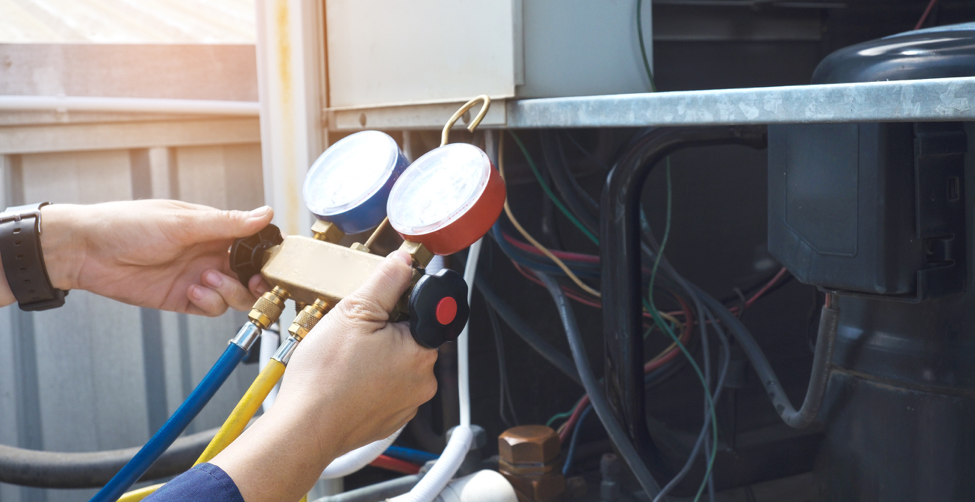Your furnace is an important part of maintaining a comfortable home during colder weather. That’s why it’s a good idea to schedule a furnace inspection once a year. Neglecting regular maintenance can result in heating loss, energy inefficiency and carbon monoxide leaks. Fortunately, you don’t have to be a pro to maintain your furnace between inspections. Here’s a quick how-to:
Before You Begin
Turn off the power to your furnace. Many furnaces have a built-in power switch. If you can’t find the switch, flip your furnace’s breaker. Turn off the main breaker if you can’t find your furnace’s circuit breaker.
Call your fire department or local gas company and vacate your home if you smell gas during any part of your furnace maintenance. In the event of a natural gas leak, avoid turning on lights or using any electrical appliances with an open flame or spark. Even small amounts of electricity or fire can cause an explosion.
Replace Your Air Filter
Examine your filter at the start of the heating season and once a month during regular use. Replace the filter if it’s dirty or in poor condition. Filters range in price and effectiveness. Cheaper, disposable models cost around $2 per filter and come in multi packs. Highly effective and washable filters can cost $15 and up, depending on the quality.
Replacing your filter is simple: Remove your furnace’s access panel and take out the old filter. Be sure your replacement is suited for your home and furnace. Slide your new filter into place. Be sure the air-flow markings are facing the correct direction. Replace the access panel and throw away your old filter.
Oil Your Blower Motor
A lack of lubrication will reduce your furnace’s effectiveness and potentially damage the unit. Adding oil to your furnace will require some mechanical know-how. Call a pro if you’re unsure about tackling this job. Here’s a quick guide to help you lubricate your blower motor:
- Open the access panel. Loosen the panel’s screws and remove the panel.
- Remove the blower motor housing. The blower motor housing is located near the base of the furnace. Remove the bolts holding the housing in place and pull the motor out of the furnace. Avoid stretching the motor’s wires. Set the motor just outside of the furnace.
- Remove the motor. Remove the set screw on the side of the housing. Pull the motor out of the housing.
- Add the oil. The oil ports on the motor are usually marked with plastic or metal plugs. Remove the plugs and squeeze two to three drops into the ports.
- Re-install the motor. Replace the motor and the access panel.
Inspect the Belt
The motor belt should be firm and flex no more than one-half inch. Inspect the belt for cracks and wear. Install a replacement if the belt is old or damaged. Use a wrench to loosen the motor bolts. Remove the old belt. Install the new belt and re-tighten the motor bolts. Belts normally cost between $4 and $6.
Check Your Furnace’s Ventilation
Some furnaces have vents on the outside of your home. Check these openings to ensure they are clear of debris. Blocked ventilation will affect the efficiency and long-term health of your furnace. It’s especially important to check your furnace’s flu. Your flu vents harmful gases like carbon monoxide away from your home. Changing your filter is a good time to ensure your flu is free of any rust, corrosion or other deterioration.
Call a Pro
Regular DIY maintenance is an important part of keeping your furnace in good shape. But it’s also necessary to enlist the help of a pro to tackle in-depth maintenance. Here’s an overview of an HVAC specialist inspection:
- Check vents
- Analyze combustion gases
- Check blower door
- Check for blockage at intake points
- Inspect the heat exchanger
- Inspect the burners
- Check drainage systems and internal hoses
- Check the drain and trap
- Remove and inspect the blower wheel
- Test the motor’s amp draw
- Inspect belts
- Inspect wiring
- Check filters




Recent Comments